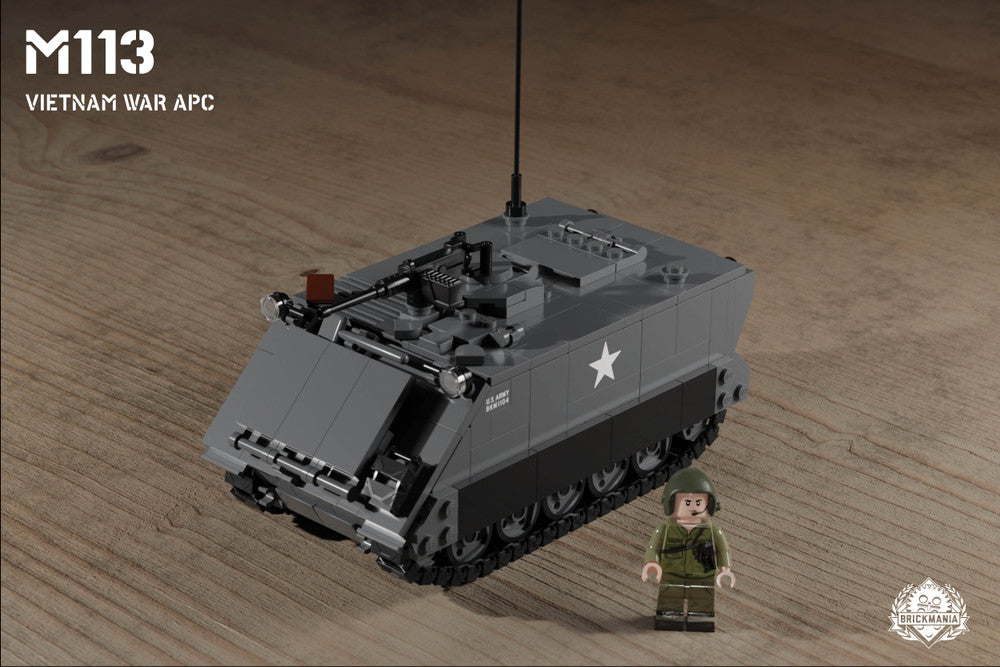This store requires javascript to be enabled for some features to work correctly.
※Due to customs regulations, postal shipments to the United States are temporarily suspended. (DHL services are still available.)
About the M113 - Vietnam APC:
The M113 Armored Personnel Carrier (APC) is a highly recognizable piece of military machinery that formed the backbone of a new style of mobile warfare. Its parallelogram shape is iconic and like the Huey, the M113 captured the essence of a generation of American warfighters in Vietnam. The M113 APC was developed by the Food Machinery Corp (FMC) in 1957. Its design was based on the M59 and M75 carriers, respectively. However, as the landscape of warfare was changing the need for an air transportable and amphibious APC was evident. FMC used alloys developed by Kaiser Aluminum and Chemical to develop a lighter APC. The carrier’s fully enclosed and armored hull could withstand small arms fire and tertiary explosions from artillery shells, but not heavier anti-material rounds. Their use was part in parcel with a style of warfare that was focused on mobility rather than static fighting. However, as hotspots developed across the world, the United States along with its Allies, were fighting an unrecognizable enemy. The M113 saw significant action during the Vietnam War, where it was used all over the country in a multitude of roles and configurations. The base model accommodated 2 crew members and 11 passengers inside—though more might be reclining on the roof. A single Browning M2 .50 caliber machine gun was mounted on the roof, however, many received in-country updates that added to the vehicle’s firepower. The M113’s fame and admiration by its crew grew throughout the Vietnam conflict, but it was its reliability and ease of manufacture that solidified it as a viable option that has far exceeded its intended service life.
The M113’s fame comes from its use during the Vietnam War. While mechanized infantry units were a new concept in Vietnam, their origins date back to World War II. After the war ended in Europe, many of those units were disbanded, as the world transitioned back to a form of normalcy. However, as tensions rose during the Cold War, various hotspots heated up around the world. In Vietnam, specifically, the traditional “battle lines” were blurred by an enemy that blended in and did not fight in a conventional manner. Having highly mobile units that could quickly infiltrate and exfiltrate out of combat zones were needed. That is where the M113 comes in. Ten U.S. mechanized infantry battalions were deployed to Vietnam from 1965 until their departure in 1972, with each having an operating strength of 900 soldiers. Their impact was felt throughout the war, both on the battlefield and off of it. Their image was prolific in the culture that surrounded the war and has persisted since. The APCs took on the attitude and swagger of the soldiers that operated them—similar to gun trucks and Hueys—they were decorated and outfitted to suit the needs of the troops. Since their introduction, over 80,000 M113 vehicles have been produced between many variations while seeing service in 44 nations.
Join our Mailing List
Thanks for Joining!

